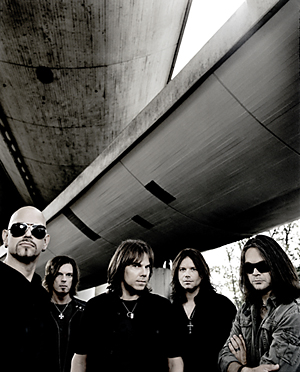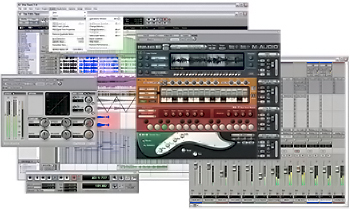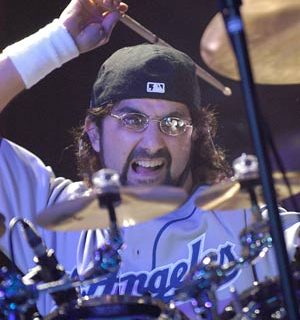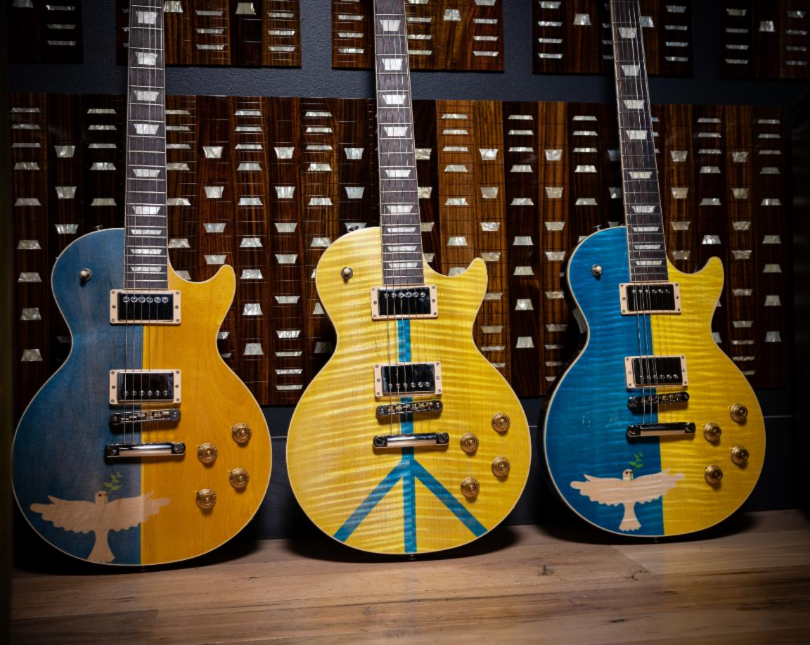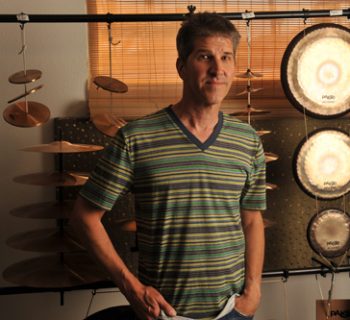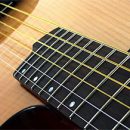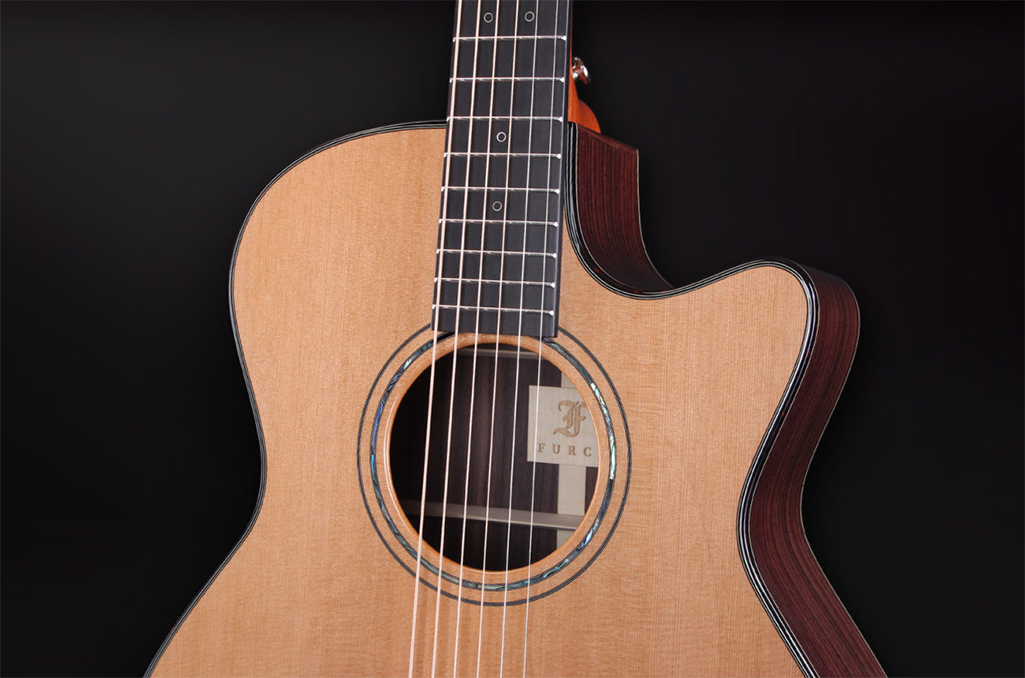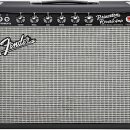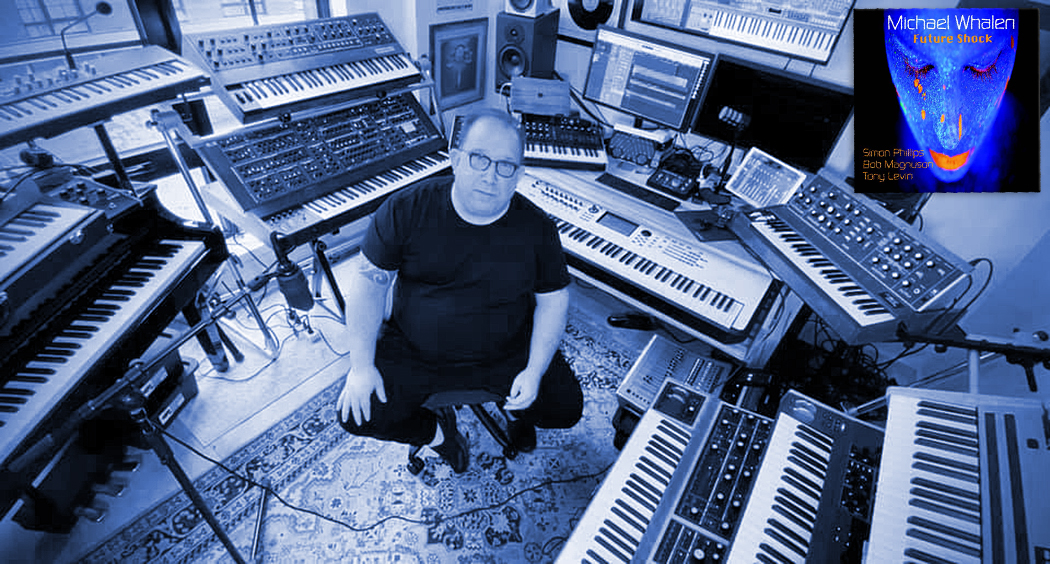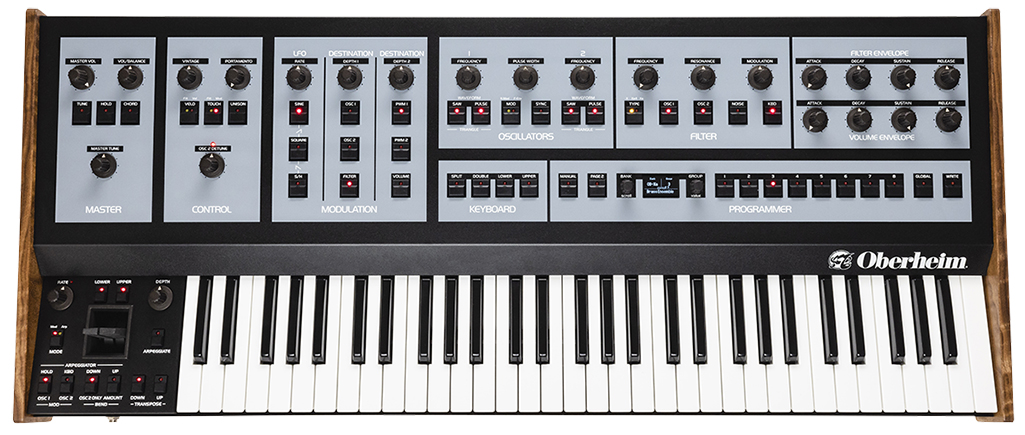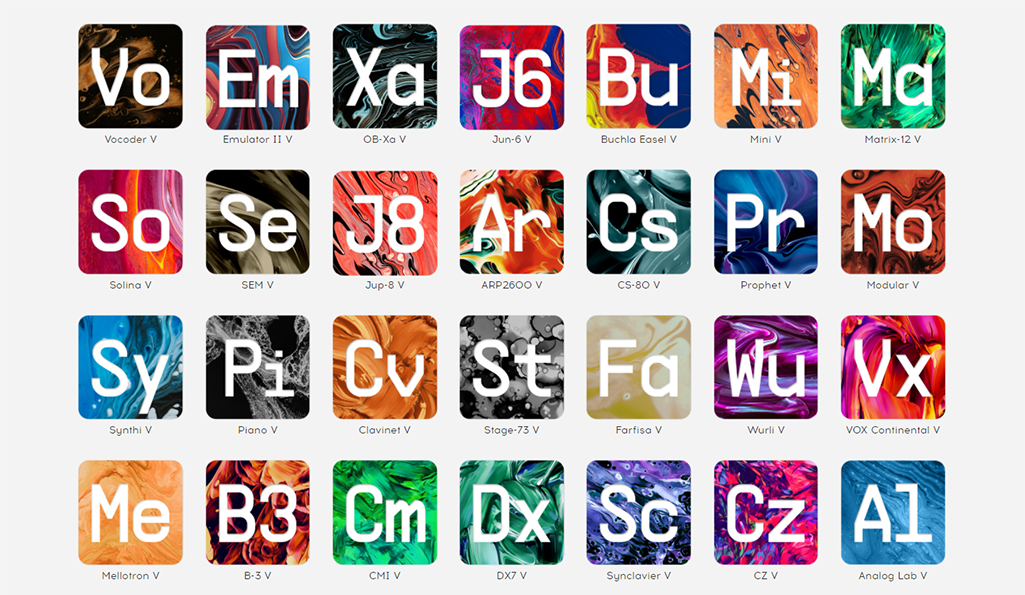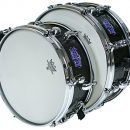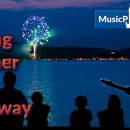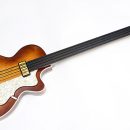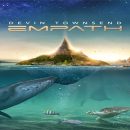Joey Tempest, John Norum, and Mic Michaeli talk about the release of Secret Society
Think you know the band Europe? Swedish hard rock popsters with big keyboards, big hair, and flashy shred guitar solos? That would be ‘80s “Classic” Europe – and definitely not the modern hard rock band you’ll hear today on Secret Society.
Made up of all five original members – singer Joey Tempest, guitarist John Norum, keyboardist Mic Michaeli, bassist John Levin, and drummer Ian Haugland, Europe took a thirteen-year break before regrouping in 2004. Though Start From The Dark wasn’t widely experienced in the United States, Secret Society, released in November 2006, is a solid hard rock album in a modern style that bears little resemblance to the band of yesterday. It features the original band members, but rather than rehashing yesterday’s sound hoping for a mid-career “comeback” like many other artists from the ‘80s, the musicians in Europe continued to evolve during their years apart.
While in the past John Norum’s explosive fretwork borrowed more from neoclassical influences and European shredsters like Michael Schenker and Yngwie Malmsteen, the modern John Norum (and thus the sound of the band) is influenced more by the likes of Tom Morello or Slash. Singer Joey Tempest has abandoned his Steve Perry-like operatic singing and found a more relaxed voice a few registers lower, well suited to the detuned guitars that now drive the band’s music.
Joey is doing 'Carrie' on his own acoustically – the rest of the band refuses to do it.
To hear a new Europe song on the radio, you would never think the music came from the band that gave us “The Final Countdown”, “Carrie”, or “Superstitious.” You would more likely confuse them with a band from Seattle or Oregon – heavy, driving, Zeppelin-infused… at least until you came to the guitar solos and occasional spattering of piano or heavy synth leads.
We caught up with Joey, John, and Mic while getting ready for a European tour. Plans for a visit to the United States are in the works for the spring or summer of 2007.

First, we reminisce about the past…
MPc: Something that I love about the new record is how different it is from your earlier material. The only thing this band has in common with “Classic” Europe is the members of the band. Listening to Secret Society, you’re a completely reinvented band.
John: Thank god for that! (laughing) We really have moved on. Some people probably expected us to do another Final Countdown, something silly like that. But that was twenty years ago, and we have all moved on. We are more of a guitar-oriented band these days, which is a good thing for me, you know. Back then it was more keyboards.
It’s still melodic rock – it still has a lot of melodies and stuff like that, but my tastes have changed a little bit since then. We tried to do new things [on the CD]. We don’t really try to follow any trends. I guess in the ‘80s we were going in that direction a little bit on Final Countdown.
Joey: It’s one of the aims we had. Other than that, we just wanted to make something fresh. The music and the lyrics just happened, but that was one decision we made – that we wanted to be relevant now.
MPc: Actually, I would say back then, you helped to create the trend. You guys rode the early wave of MTV and really led the charge for melodic hard rock bands with keyboards on a mainstream level. I think there was more emulation that followed after you than came before you.
John: Yeah, I think you’re probably right. “The Final Countdown” I think is our “Stairway to Heaven” (laughing). It works as good today as it did twenty years ago. That’s really the only song from that album that we still play. Joey is doing “Carrie” on his own acoustically – the rest of the band refuses to do it (laughing). But “The Final Countdown” is fun. They play that song at sports events around the world. And we have a lot of fun playing it live. We’ve kind of updated it a little bit from the original version. Tuned down the guitars a little bit. And it’s exciting to see the fans – how happy they get – when we play that song. That song is kind of timeless in a way, and that’s a cool thing. We’re lucky to have such a big song. It went to number one in twenty-five or thirty countries!
It’s a much bigger freedom these days. We do whatever we want to do. We don’t try to follow any trends, and if people like it, great!
MPc: Mic, you’ve been playing keyboards in Europe since the beginning. When you played the melody line for “The Final Countdown,” did you have any idea that it would go on to become one of the most famous keyboard riffs in modern music history?
Mic: I have to be honest, here. Joey wrote that thing. I think he wrote it as an intro for the live show about a year earlier. And our bass player just said one day, “This sounds good. Why don’t you try to make it into a whole song?” so he did that. The only thing I contributed to that was playing it on the album. I just have to say that it’s one of those songs that really lives its own life. It’s just going to stick with us forever.
John: I wasn’t too crazy about the song when I first heard it (laughing). Joey brought in the demo – it had a lot of keyboard stuff, and I was into more heavy guitar stuff. We appreciate what it has done for us, though, so it’s all a good thing.
MPc: From reading a few biographies on the band Europe, it seems that you didn’t care much for the commercial pop success of Europe. Did you find commercial success limited your musical freedom within Europe?
John: Yes, definitely. Especially on The Final Countdown, we kind of started thinking a lot more commercially, working on the radio, stuff like that, working with formats. I never really thought of it that way, but the other guys went in that direction. It’s a much bigger freedom these days. We do whatever we want to do. We don’t try to follow any trends, and if people like it, great!
MPc: How do you see Europe moving forward now that Secret Society has really showcased your musical growth as a band and taken you in a new direction?
Joey: We wanted to take a few chances, and there’s one thing I’d love to do with this band, and the guys would agree with me, is to try and get a few more layers to this band, to make it more towards big bands like U2. We’re not like them at all, but to have different structures to our songs, to push ourselves, to maybe become a broader band than we are. We’re really keen on experimenting and taking Europe further. We can get even better. Thank you for noticing!
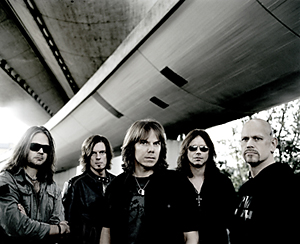 A Chat With John Norum
A Chat With John Norum
MPc: John, the sound of your playing is so different today than it was back in the ‘80s. Who are some of the guitar players and bands that you’ve been listening to over the past few years that may have inspired you to reach in new directions with your own guitar playing sound and style?
John: I’m really into Audioslave a lot when it comes to songwriting. Tom Morello is a great rhythm player – he comes up with great riffs and songs, but I’m not crazy about his solos. Not enough blues for my taste, you know? (laughing) I always liked Slash a lot, Velvet Revolver. I’ve done a couple of shows with him here in Sweden.
MPc: Funny, as soon as you mentioned Velvet Revolver, I thought of your new song “Love Is Not The Enemy” – the Revolver influence was definitely there in the guitar groove.
John: Oh yeah. Definitely.
MPc: Let’s talk about your choice of guitars, amps, and effects on Secret Society.
John: It’s mainly Les Pauls. I used about 90 percent Les Pauls on the album. I had about ten of them in the studio. I just listened to them all and kind of picked out the one that sounded the best [1981 Les Paul Custom] and pretty much went with that one for most of the album.
I did use a strat on one song – “Let the Children Play” – where I doubled the guitar with the Les Paul on one side and the strat on the other side. On the song “Secret Society” I used a Gibson 335.
I want to buy that amp. It’s Michael Schenker’s.
MPc: I saw a photo of you with the 335 on the Europe website and was surprised to see you playing a guitar like that!
John: Yeah, I won’t be playing that one live (laughing), but it’s a great sounding guitar, and it feels great to play… but it doesn’t really look cool (laughing), at least I don’t think so anyway. It’s just not my style. I also used an old Gibson SG – a ’67 – for three of the solos, and the rest of the solos are that Les Paul.
The acoustic guitar I used was a Martin. It was the recording engineer’s guitar that he had lying around the studio. He had two of them there. I have a Seagull at home – it’s like fifteen or twenty years old. But when we compared the sound to the Martins he had in the studio, it was like day and night, so we went with that.
MPc: What about your amps?
John: The amps are Marshalls. Fifty watt JCM-800s, the 2205, which is the split-channel model. It has one normal channel and one high-gain channel. They’re stock. The only thing I’ve done with them is change the tubes to Groove Tubes EL-34, which have a little more headroom than the original ones, a little cleaner and a little louder. I changed the preamp tubes to some Chinese, high-grade tubes that sound really good.
The main amp I used on the album used to be owned by Michael Schenker. I tried a bunch of them. The 2000, I also have another one which is identical to this fifty watt, but a different year. I was experimenting. This one is from 1987. I tried one from ’83 and one from ’88, and they all sound completely different, so I think I just got a really good one here. It’s the one that Michael Schenker used on the reunion tour with UFO – “Walk on Water.” He called me about a week after [the tour]. They sold a lot of equipment after that tour, and I don’t know if it was a mistake selling that amp.
They had some amps, a couple of cabinets. But I was like “I want to buy that amp. It’s Michael Schenker’s. That’s cool.” He’s one of my biggest influences, so to own one of his amps!.. A week later he called – I’ve known him since before [fame]. And he’s like “I heard you bought my amp. I want my amp back” (laughing). And I was like “Well it’s not working right now. It’s broken. I think the transformers burned out” or some other crappy lie, which made me feel horrible. But I didn’t want to give it back, and that’s the main one I’m using now.
MPc: Well your secret is out now!
John: Oh, it’s been out (laughing). Every time I see him now, he looks at me a little bit funny, like thinking “Oh, you screwed me on that one” (laughing).
MPc: Listening to Secret Society, your style of playing has changed a lot from earlier works of yours – particularly on rhythm parts, where you’re now playing with dropped tunings.
John: Yeah. In the old days, we just used standard tuning, A 440, you know. We didn’t really know about those tunings. The first time I heard drop D tuning was Van Halen’s “Unchained” and I was like “What is that? That’s really cool!” But we were just doing standard tuning back then. We started experimenting with that on the Start From The Dark album which came out about two years ago.
I kind of showed it to Joey and he came up with some cool riffs. He hadn’t played with a dropped tuning before so it was a new thing for him, even though really it’s an old thing that players did in the ‘70s. But a lot of the new bands started doing it in the late ‘90s, or even earlier… Soundgarden. They started doing that. But Europe wasn’t around at that time. We had taken a break for twelve years. But we tried doing something different here instead of the standard tuning because it comes out a lot heavier. You get a totally different vibe. It can be the same riff [you would have done with standard tuning] but it comes out sounding totally different.
We also did some B drops – drop the E string to B, which is something I discovered from Black Rebel Society. I bought the first BRS album, Sonic Brew, and was like “God, what is that? What kind of tuning is that? It’s super heavy!” So I started messing around a little with that, and we’ve done a couple of songs with that tuning as well. We have a few songs at 440, and a few songs a half-step down. It just sounds a little bit heavier.
I hate to say this, but Joey usually says that it sounds very “modern,” very up to date, because he’s into that modern stuff. Me, I’m very old school. I don’t like to use that word very much. But that’s why [Secret Society] sounds more like the new bands.
MPc: Your lead playing makes more use of wah than I’ve heard from you before, as well as some great slide playing (like on “Wish I Could Believe”).
John: Yeah, definitely. I really love the wah wah pedal. I don’t use it so much up and down. It’s like a Michael Schenker kind of thing, which is you kind of put it in a place and get that knee-drenching tone which is really kind of cool. And some slide playing, and a Jim Dunlop Rotovibe, which is on the chorus setting when I play the slide. I just experiment with different things, you know.
MPc: Which wah do you use?
John: It’s the Dunlop Jimmy Hendrix. It’s really cool, it reaches a lower register… is that how you say it? I haven’t spoken English in so long (laughing). It’s a lot lower in the frequencies than a lot of other wah pedals. And when you push it all the way down it doesn’t get that super-screamy, thin, pitch. I’m not really into that many effects. Live I just use two pedals and that’s it, you know? An MXR Stereo Chorus, which I use for clean stuff, and my wah wah pedal. And then I have a Roland delay through one of the amps in the effects loop. That’s about it. Very simple setup.
A Chat With Mic Michaeli
MPc: First things first – every keyboard player, even today, wants to know what synths were used to create the famous lead sound from “The Final Countdown.”
Mic: It was a Yamaha rack thing, the TX-816, it was basically eight DX-7s in a module, together with a Roland JX-8P. I made a brassy sound from the JX-8 and used a factory sound from the Yamaha, and just layered them together. It’s a very special sound. I haven’t been able to create it on any other synth since then, so now when I play it live, I just sampled that sound and use that as the “Final Countdown” sound.
MPc: The role of keyboards in Europe’s sound has changed significantly. In the late ‘80s, synth sounds were much more dominant in the overall sound on albums like The Final Countdown and Out of This World, whereas on Secret Society, a lot of your playing is done in a support role behind John’s guitars, and to orchestrate many of the songs. How do you find a happy medium existing in a band that has always featured outstanding guitar work either from John Norum or Kee Marcello? And how does this influence your approach to songwriting?
Mic: It’s a challenge, I’ll tell you that! John is very guitar oriented in his mind. The role fits me perfect because I don’t need to be very dominant in the music, because I’m very involved in the arranging of the songs. Where Europe is at the moment, I’d rather have the guitars more in the front and the keyboards more of a backup role.
Actually, what we’re doing with a lot of the songs is that I’m playing the same riffs, or almost the same riffs, that John does on the guitar, on my keyboards, to make the guitars sound just a little bit different. I use a lot of the Nord Lead for those sounds since I think it’s just a tremendous synthesizer to make distorted, almost-guitar-like, sounds. I prefer the sound that Europe has today from the ‘80s sound, even though the keyboards were more in the foreground back then.
It’s not necessary for me to have the keyboards up front in the sound because I’m so involved in the arranging of the songs.
MPc: I noticed in some studio photos keyboards from Nord, Korg, and a grand piano.
Mic: That was the Triton Extreme, I believe. I still use that, but I’m looking into trying the Roland Phantom X because sometimes when you have to fly to different places, you can’t bring all the gear… instead of using a [dedicated] sampler, I’m looking to use the internal sampler in the Phantom X.
The piano is a Steinway. It’s actually the same piano that Abba used on their studio recordings back in the ‘70s or early ‘80s.
MPc: You have some great keyboard moments on Secret Society such as the ripping synth solo in the title track, the piano-based “A Mother’s Son,” and the cool synth lead opening in “Forever Traveling.” What were some of your favorite keyboard moments on the new record?
Mic: You mentioned “Secret Society.” I kind of liked that because from the beginning I was meant to do just a typical, short solo. I figured I’d do very long notes, a feel thing, and then for some reason someone said “Why don’t you try something faster?” and we just did that thing. From the beginning, it was just a joke, but we liked it and decided to keep it. It’s kind of fun, and I kind of like it listening back at it now.
MPc: What was your involvement in the production of Secret Society?
Mic: It was very much Joey and myself who more or less lived in the studio, and John as well. Like Joey said at one point, it was sort of a creative chaos in the studio. But it worked out really nice. And as I said, it’s not necessary for me to have the keyboards up front in the sound because I’m so involved in the arranging of the songs anyway. I get my kicks anyway.
There were a few moments where we actually stayed overnight in the studio. Joey went back to get some sleep and I worked on some keyboards until five or six in the morning, then went to sleep on a couch in the studio. Joey came in the morning at nine o’clock and started checking out some vocals he had done the night before and then I woke up and we did more vocals. It was a bit of a creative chaos.
MPc: How do you deal with the challenge of finding space for your keyboards to sit in a song with the guitars? Do you and John play the same basic parts, or does one of you play chords with harmonies and other notes like 7ths or 9ths so that you’re in different places on the musical spectrum?
Mic: Sometimes I play exactly the same things as he does, and if you just tuck it in there, it almost sounds like a different guitar sound. You don’t really hear the keyboards but they are there. For example, there’s a song, “Wish I Could Believe.” The guitar is playing in the verse, very simple, and I play exactly the same thing on an electric grand piano, just to make it sound a little different.
But there are other places where I do exactly what you say, especially ninth things, in places where I want the keyboards to be heard. And it’s impossible to use those big, floating sounds. You have to find almost lo-fi sounds to make them cut through.
MPc: Are you still playing much organ?
Mic: There’s actually no organ on this album at all, but I still have my Hammond C3.
MPc: Do you tour with it?
Mic: No, I have a Nord Electro for the Hammond sounds.
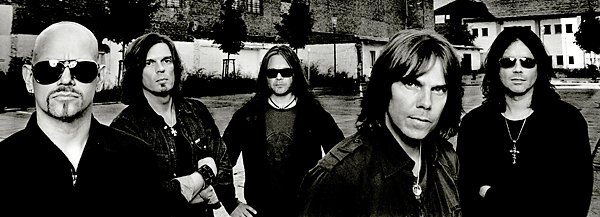
A Chat With Joey Tempest
MPc: Historically, there was much more of an operatic presence to your vocal style, but on the new record, your voice has been used in a much more modern style. Can you tell me about your approach to recording vocals on Secret Society?
Joey: The new album, for instance, we detuned the instruments a little bit, just to make it sound a bit fresher, which makes the voice [performance] a little bit different, and I kind of like it. It’s a bit more relaxed and straightforward, but I think I’ve also developed a bit more of a voice that suits the lyrics in a different way.
When I started singing, I listened to other singers. It could be Robert Plant or Coverdale or Phil Mogg from UFO, maybe, or Phil Lynott from Thin Lizzy… you try to get ideas from them when you’re a teenager. You sort of gather influences. Even earlier I listened to Elvis or Elton John, so you sort of get ideas from that. But when I started with the band, basically what happened playing with John and the band in the beginning, he always played his guitar so loud in rehearsal that I started writing songs in higher keys. I wanted to be able to use my voice as an instrument and put it on top of his.
The first two albums, I think, I was more searching for a style. Wings of Tomorrow was getting better. On The Final Countdown, we started working with Kevin Elson. I was always intrigued by Steve Perry of Journey [Kevin produced numerous Journey recordings] – he sang quite high. It was kind of an experiment for me to try and sing high like that, and I found a new power up there. I remember writing demos for the Final Countdown album and experimenting with higher vocals, and it gave it a lot of power. But as we started again [over a decade later], and with Secret Society, it felt more natural and more modern to not push it and not be too overdramatic with vibratos and ad-libs and such. I used to do ad-libs all the time and I remember the guys in the band saying I should cut down on that.
MPc: I remember on Out of This World, almost every song started with a vocal melody.
Joey: Exactly! I did a little bit of that on Prisoners In Paradise, too, but it was around that time that band members started to alert me to this, and then I thought, yeah, it’s just filling spaces.
If you don’t sing a one- or two-hour set every now and then, your vocal chords get a bit shocked when you go on tour.
MPc: I notice that most songs are co-written with Mic, and some are co-written with John. Can you tell us about the songwriting process?
Joey: On this album, for instance, I wrote three or four by myself, and three with Mic, three with John. I usually start out just playing a lot of guitar. Acoustic guitar, usually. And I record it on my mobile phone or any mobile recording device I have with me wherever I am. I just record small bits and pieces of a verse or a chorus. Basically, just ideas for a melody or a riff. At the same time, I send text messages to myself with lyric ideas all the time as well. I sort of gather things as I travel and then when I get into my home studio, I go through them and I pick the best ones. I play acoustic guitar every day and try the ideas, and the ones that stick I move on with.
On this album I was lucky because Mic sent some great stuff and John sent some great riffs – especially “Love Is Not The Enemy” and “Getaway Plan.” I just really get going when John sends me stuff like that. I get inspired, come up with good choruses for it, move things around. I just try to work every day with what I’ve got, and stuff that isn’t good I just throw away immediately. Then I do demos of some stuff, and demos of Mic and John’s stuff, putting my ideas in there, singing on top of it over and over again to come up with stuff, and then I send it back to them [and they comment on it].
In the end we had about seventeen demos, and then we met up in Sweden, probably in May, and started rehearsing for two or three weeks, brought it down to eleven. Then we just concentrated on those eleven tracks and went into the studio. It took about fifty or sixty days for everything in the studio from beginning to end.
John worked closely with the sound engineer to record his guitar. Me and Mic were in a separate room doing keyboards and vocals. Mic was engineering me when I was doing vocals, and I was engineering him when he was doing keyboards. We had some help with editing and programming in a third studio.
And then the mixing guy, Stefan Glaumann – you probably know him. He’s done Raamstein and stuff – he sat in a fourth studio. We sent the stuff as it was finished to him to mix. We’d already booked the date at Sterling Sound in New York for mastering – we had a deadline to work against, which was kind of good. We worked day and night – it was a bit of creative chaos, and it was really good because it really brings something else out of you. You come up with last-minute ideas, like the children’s choir thing in “Let The Children Play.”
MPc: Who were those kids?
Joey: It’s one kid singing eleven times! And he’s an English kid! There’s a friend of mine, and he has a son, Archie. He’s ten years old, and he’s never sung on an album before, and I asked my friend “Would you try him?” because I wanted something more naive, and all the guys thought he sounded great. So instead of bringing other kids in, we just told him to sing it ten more times. We really liked it. It brought another dimension to it.
Lyrically, I try to draw on a lot of stuff that’s happened to the band and our generation as people, friends and family. I think we’re getting better with the lyrics. I think finally for me, personally, we’re doing some good stuff, some good rock for being a Scandinavian band, which you have to take into consideration. But John’s lived in LA for maybe fifteen years, I’ve lived in London about fifteen years, so I supposed we’re becoming a bit more international as well.
MPc: How do you keep your voice strong and healthy? Singing rock music and some of your higher-pitched earlier songs has got to be tough on your voice.
Joey: You can hear that I’m a bit hoarse at the moment. We did three shows, and we did twelve days of rehearsal. I’ve probably sung fifteen days in a row now, so I’m quite hoarse. But I’m quite pleased because my voice is doing great live. This is a day off so today I’ll recuperate a bit. Tomorrow will be a show in Denmark – I’m not worried about my voice at all.
I try to prepare before the tour a bit. I have a studio in London where I go to and play with the band recorded on tape. I asked them a long time ago when we had a long set to record the set without me singing it, so I put that tape on when we’re not on tour and sing along in this warehouse and I actually pretend it’s a live situation.
That’s the problem – if you don’t sing a one- or two-hour set every now and then, your vocal chords get a bit shocked when you go on tour. I try to keep it up even when we have time off. I don’t drink – I try not to drink alcohol because it dries up my vocal chords. It can happen to anyone. Ask any good singer – they’ll know this. A long time ago I was really drinking hard on tour. Now, I’ll have a few beers when we have some time off. But on this tour, we’re doing a month of Scandinavia, and I’m not going to drink. I try to drink some lemon tea or hot tea just before going on stage.
And the important thing is to try not to get too excited and push your voice too hard on the first few songs. If you think about that as a singer it helps a lot. You can fool yourself into thinking that your voice is better than it is, and then you notice after a few gigs that you just sort of lose it.
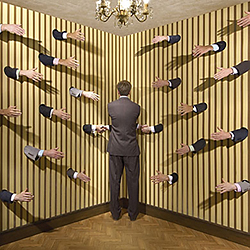 MPc: What are your mics of choice in the studio and live?
MPc: What are your mics of choice in the studio and live?
Joey: Live, because I do swing my mic stand around a bit, I have a wireless. In the studio on this album, we used a Neumann U-47 through a few different compressors. We tried a few different ones but that one fit really well. I sing quite hard and loud, so I need to try out microphones for a while to see which ones don’t distort when I sing loud. I learned from working with Kevin Elson that you can use the old microphones. It doesn’t matter if they distort a little bit – that can be part of the sound. But some microphones don’t sound well at all when they distort. Neumanns, or tube mics of any kind, can usually be okay.

